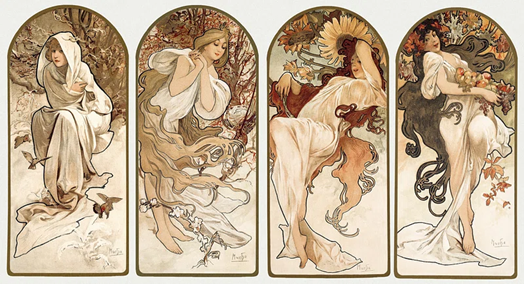
The Art Nouveau movement began in Britain during the second half of the nineteenth century, stemming from the Arts and Crafts movement which had been championed by William Morris (1834-1896). The primary reasons for the development of this new style were: a reaction to prevailing art education, industrialised mass production from the industrial revolution and the debasement of historical styles. Taking inspiration from the unrestrained aspects of the natural world, Art Nouveau influenced all aspects of art and architecture, particularly in the applied arts, graphic work, and illustration. The intention was to unify the fine and applied arts to create one ‘total work of art’. Art Nouveau's embrace of nature, its emphasis on beauty and craftsmanship, and its desire to bring art into everyday life continues to captivate and inspire art enthusiasts to this day.
History of the Art Nouveau Movement
The term "Art Nouveau" first appeared in a Belgian journal called L'Art Moderne, used to describe the works of a group of innovative painters and sculptors called Les Vingt. These artists were influenced by the ideas of British critic John Ruskin and French architect Eugène-Emmanuel Viollet-le-Duc, who championed the unity of all arts. The movement quickly spread across Europe, called Jugendstil in Germany, Modernismo in Spain, Secession in Austria, and Stile Floreale in Italy. The artists working in the Art Nouveau style believed in the unity of all arts and despised any discrimination between fine and decorative arts. They wanted art to be an integral part of everyday life, elevating people's existence with beauty.
What were the main characteristics of Art Nouveau?
The natural world
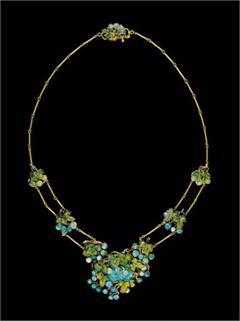
One of Art Nouveau’s primary characteristics was its inspiration from the natural world. Artists incorporated organic forms, curvilinear lines, and motifs from plants, flowers, and animals. This emphasis on nature aimed to restore a sense of harmony and beauty in an increasingly industrialised and mechanised society. Elegant naturalistic imagery could be found throughout Art Nouveau works, with floral motifs and organic forms adorning ceramics, jewellery, glassware, and interiors. Nature came alive in their creations, bringing back its beauty to modern life. The works of Charles Darwin also played a role, reminding humanity to find harmony with the natural world rather than standing alone. So, Art Nouveau artists learned to see the world with fresh eyes organic forms, fluid lines, sensual textures and gleaming colours.
Japonisme
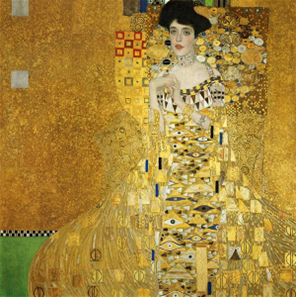
Japonisme, a French term coined in the late 19th century to describe the craze for Japanese art in the West, had a significant influence on the Art Nouveau movement. It provided a fresh source of inspiration, challenging established Western artistic norms and leading to the creation of a new visual language that celebrated nature, ornamentation, and the fusion of art with everyday life. Japonisme inspired Art Nouveau artists to break away from traditional western art forms, with the use of unconventional spatial representation: overlapping form, asymmetrical curves, new materials and techniques spatial ambiguity and the integration of decorative elements.
Curvilinear lines
Art Nouveau artworks featured flowing, sinuous lines that echoed the graceful forms found in nature. These curvilinear lines were used in both two-dimensional works, such as paintings and illustrations, and in the design of three-dimensional objects like furniture, architecture, and decorative items.

Elegant bench with sweeping curves recalling the curvilinear designs of Hector Guimard (1867-1942), a French architect and designer who achieved recognition for his design for the Castel Beranger, the first Art Nouveau apartment building in Paris.
Symbolism and allegory
Art Nouveau often employed symbolic and allegorical imagery. Artists conveyed deeper meanings through their works, exploring themes such as the cycle of life, the role of women, and the connection between humans and nature. Symbolic representations of mythical creatures, femmes fatales, and ethereal figures were common.
New techniques
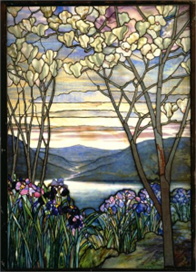
Art Nouveau embraced innovation in materials and techniques. Artists experimented with new materials like glass, iron, and ceramics, pushing the boundaries of craftsmanship and design. They also explored techniques such as stained glass, enamelling, and metalwork, creating unique and striking effects.
Main artists of the Art Nouveau Movement and their works
Gustav Klimt (1862–1918)
Before the Art Nouveau movement, Austrian Gustav Klimt was known for his decorative paintings of historical scenes and figures. Klimt’s primary subject in his Art Nouveau paintings was the female figure. His painting The Kiss (1907–1908), is easily the most recognisable examples of his work. The opulent patterns and sensuous forms in the painting are typical of the fin-de-siecle spirit of the Art Nouveau movement. The simplified composition and figure placements of The Kiss departs from traditional western art and reflects the influence of Japanese prints.
A sumptuous jigsaw puzzle which reproduces details from three of Gustav Klimt’s (1862-1918) beguiling figurative paintings: ‘Portrait of Adele Block-Bauer I’, 1907; 'The Kiss', c.1907; and Hygeia from 'Medicine', c.1900.
Louis Comfort Tiffany (1848-1933)
American designer Louis Comfort Tiffany was the son of the famous jeweller Charles Lewis Tiffany, and one of the most iconic figures in the Art Nouveau movement. He was notorious for applying Art Nouveau aesthetics to interior products and glassware. His nature themed ‘Daffodil’ lamps are an exemplar in illustrating Tiffany’s lifelong interest in the natural world, in particular, his love of the Daffodil. The first Daffodil lampshades appeared round 1900, and by 1903, a more naturalistic version was created. These lampshades became so popular that Tiffany Studios continued to make them for another twenty years later.
Alphonse Mucha (1860–1939)
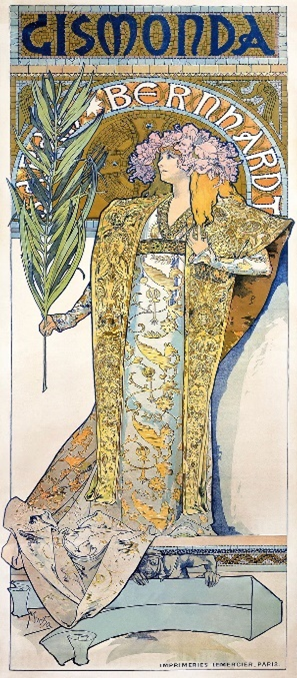
Although Alphonse Mucha rejected the Art Nouveau label, his work was a major influence on the movement. A Czech painter, illustrator and graphic artist primarily known for his work on commercial posters and advertisements. Mucha’s subjects mainly consisted of women, specifically celebrating femininity, the socially empowered and modern woman. One of his most famous works was a poster for play Gismonda (1894), that featured the most famous Parisian actress of the time, Sarah Bernhard. Gismonda was pivotal point in poster design, with long and flowing curvaceous lines, natural motifs and the female figure embodying traditional Art Nouveau femininity and elegant symbolism.
Charles Rennie Mackintosh (1968-1928)
Charles Rennie Mackintosh was a Scottish architect, designer, and leading figure of the Art Nouveau movement. Known for his innovative and harmonious designs, he created distinctive buildings, furniture, and decorative arts. Mackintosh's work continues to inspire with its blend of traditional and modern elements, geometric patterns, and emphasis on functionality.
The epitome of elegance and refinement, this sinuous silver pendant is set with striking opalite and inspired by a striking drawing created by Charles Rennie Mackintosh (1868 – 1928) for a New Year's card now held in the collection of the Metropolitan Museum of Art, New York.
Examples of Art Nouveau Museums
If you are interested in seeing some examples of Art Nouveau works in the UK, you can visit some museums that have collections from this movement:
- The Victoria and Albert Museum in London
- The William Morris Gallery in Walthamstow
- The National Museum of Scotland in Edinburgh
- The The Glasgow School of Art
- The The Laing Art Gallery in Newcastle



